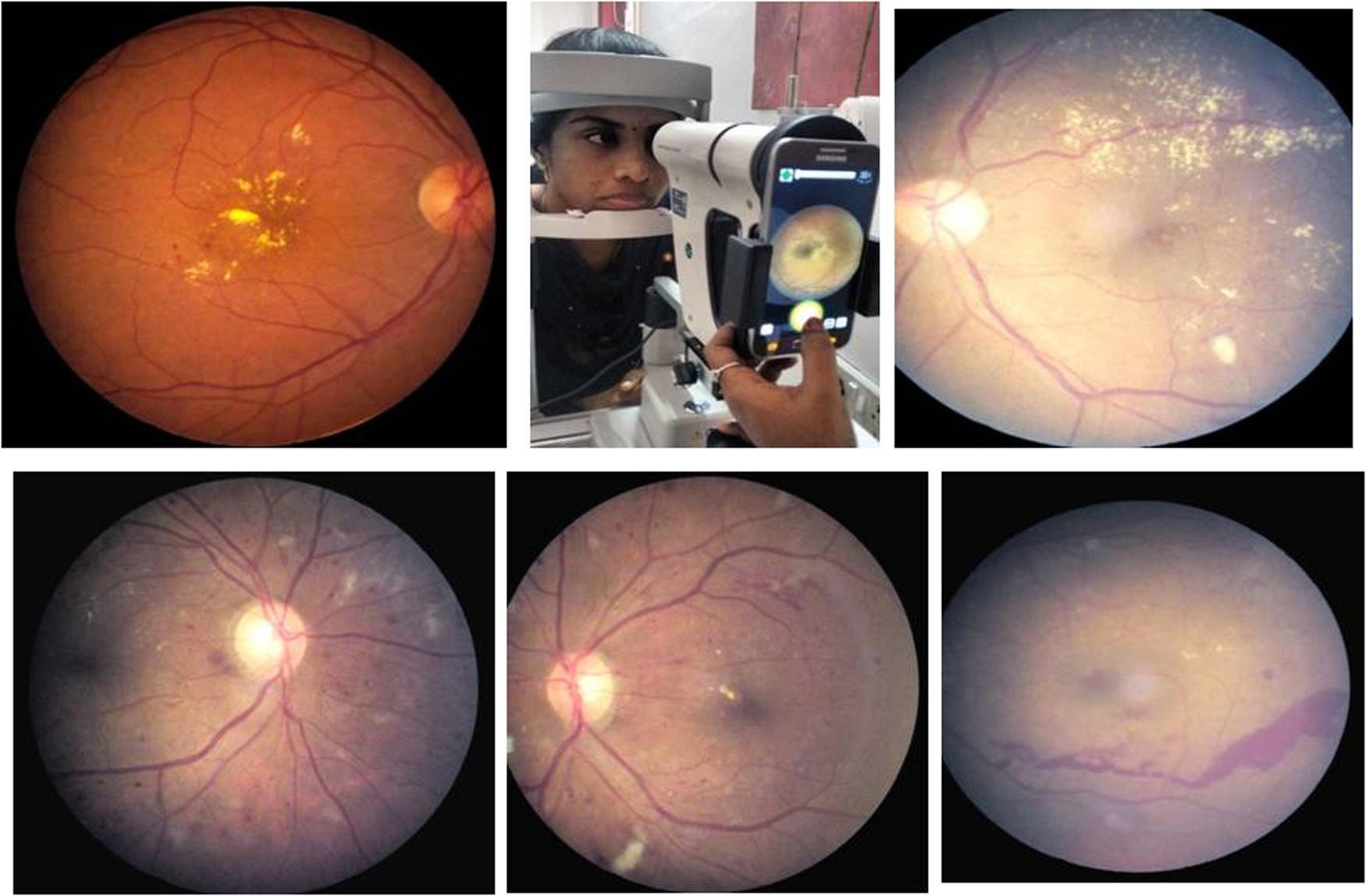AI in Diabetic Retinopathy Market Analysis, Size, Share, Growth, Trends Forecasts 2023-2030
The Global AI in Diabetic Retinopathy Market is witnessing unprecedented growth, reshaping the landscape of diagnostic and therapeutic interventions for this prevalent and sight-threatening complication of diabetes. As technology continues to advance, artificial intelligence (AI) is emerging as a transformative force in healthcare, particularly in the domain of diabetic retinopathy (DR), where early detection and timely intervention are critical.
Get Free Sample Report: https://www.metastatinsight.com/request-sample/2588
Key Global AI in Diabetic Retinopathy Players
• Google LLC
• Topcon Corporation
• Carl Zeiss Meditec AG
• NVIDIA Corporation
• Eyenuk, Inc
• RetinAI Medical AG
• iCare
• Heidelberg Engineering GmbH
• Nidek Co., Ltd
• Optos plc
• Digital Diagnostics Inc.
Browse Complete Report @ https://www.metastatinsight.com/report/ai-in-diabetic-retinopathy-market
AI applications in diabetic retinopathy are gaining momentum due to their ability to augment traditional diagnostic methods. Image analysis, a cornerstone in the detection of retinal abnormalities, has witnessed a paradigm shift with the incorporation of AI algorithms. These algorithms, trained on vast datasets of retinal images, demonstrate remarkable accuracy in identifying subtle changes indicative of diabetic retinopathy. Consequently, they empower healthcare professionals with more efficient and precise tools for early diagnosis.
One of the notable contributions of AI in diabetic retinopathy lies in its potential to address the challenge of limited access to ophthalmic expertise, especially in resource-constrained regions. Automated screening processes, driven by AI, enable remote and quick assessment of retinal images, offering a scalable solution to bridge the gap in healthcare accessibility. This democratization of expertise has the potential to revolutionize the way diabetic retinopathy is diagnosed and managed globally.
Drop us an email at:
Saquib.Iqbal@techinsightsmit.com
Call us on:
https://www.metastatinsight.com
+1 214 613 5758
+91 73850 57479
AIinDiabeticRetinopathyMarket, AIinDiabeticRetinopathyMarketIndustry, AIinDiabeticRetinopathysize, AIinDiabeticRetinopathyMarketshare, AIinDiabeticRetinopathyTrend
The Global AI in Diabetic Retinopathy Market is witnessing unprecedented growth, reshaping the landscape of diagnostic and therapeutic interventions for this prevalent and sight-threatening complication of diabetes. As technology continues to advance, artificial intelligence (AI) is emerging as a transformative force in healthcare, particularly in the domain of diabetic retinopathy (DR), where early detection and timely intervention are critical.
Get Free Sample Report: https://www.metastatinsight.com/request-sample/2588
Key Global AI in Diabetic Retinopathy Players
• Google LLC
• Topcon Corporation
• Carl Zeiss Meditec AG
• NVIDIA Corporation
• Eyenuk, Inc
• RetinAI Medical AG
• iCare
• Heidelberg Engineering GmbH
• Nidek Co., Ltd
• Optos plc
• Digital Diagnostics Inc.
Browse Complete Report @ https://www.metastatinsight.com/report/ai-in-diabetic-retinopathy-market
AI applications in diabetic retinopathy are gaining momentum due to their ability to augment traditional diagnostic methods. Image analysis, a cornerstone in the detection of retinal abnormalities, has witnessed a paradigm shift with the incorporation of AI algorithms. These algorithms, trained on vast datasets of retinal images, demonstrate remarkable accuracy in identifying subtle changes indicative of diabetic retinopathy. Consequently, they empower healthcare professionals with more efficient and precise tools for early diagnosis.
One of the notable contributions of AI in diabetic retinopathy lies in its potential to address the challenge of limited access to ophthalmic expertise, especially in resource-constrained regions. Automated screening processes, driven by AI, enable remote and quick assessment of retinal images, offering a scalable solution to bridge the gap in healthcare accessibility. This democratization of expertise has the potential to revolutionize the way diabetic retinopathy is diagnosed and managed globally.
Drop us an email at:
Saquib.Iqbal@techinsightsmit.com
Call us on:
https://www.metastatinsight.com
+1 214 613 5758
+91 73850 57479
AIinDiabeticRetinopathyMarket, AIinDiabeticRetinopathyMarketIndustry, AIinDiabeticRetinopathysize, AIinDiabeticRetinopathyMarketshare, AIinDiabeticRetinopathyTrend
AI in Diabetic Retinopathy Market Analysis, Size, Share, Growth, Trends Forecasts 2023-2030
The Global AI in Diabetic Retinopathy Market is witnessing unprecedented growth, reshaping the landscape of diagnostic and therapeutic interventions for this prevalent and sight-threatening complication of diabetes. As technology continues to advance, artificial intelligence (AI) is emerging as a transformative force in healthcare, particularly in the domain of diabetic retinopathy (DR), where early detection and timely intervention are critical.
Get Free Sample Report: https://www.metastatinsight.com/request-sample/2588
Key Global AI in Diabetic Retinopathy Players
• Google LLC
• Topcon Corporation
• Carl Zeiss Meditec AG
• NVIDIA Corporation
• Eyenuk, Inc
• RetinAI Medical AG
• iCare
• Heidelberg Engineering GmbH
• Nidek Co., Ltd
• Optos plc
• Digital Diagnostics Inc.
Browse Complete Report @ https://www.metastatinsight.com/report/ai-in-diabetic-retinopathy-market
AI applications in diabetic retinopathy are gaining momentum due to their ability to augment traditional diagnostic methods. Image analysis, a cornerstone in the detection of retinal abnormalities, has witnessed a paradigm shift with the incorporation of AI algorithms. These algorithms, trained on vast datasets of retinal images, demonstrate remarkable accuracy in identifying subtle changes indicative of diabetic retinopathy. Consequently, they empower healthcare professionals with more efficient and precise tools for early diagnosis.
One of the notable contributions of AI in diabetic retinopathy lies in its potential to address the challenge of limited access to ophthalmic expertise, especially in resource-constrained regions. Automated screening processes, driven by AI, enable remote and quick assessment of retinal images, offering a scalable solution to bridge the gap in healthcare accessibility. This democratization of expertise has the potential to revolutionize the way diabetic retinopathy is diagnosed and managed globally.
Drop us an email at:
Saquib.Iqbal@techinsightsmit.com
Call us on:
https://www.metastatinsight.com
+1 214 613 5758
+91 73850 57479
AIinDiabeticRetinopathyMarket, AIinDiabeticRetinopathyMarketIndustry, AIinDiabeticRetinopathysize, AIinDiabeticRetinopathyMarketshare, AIinDiabeticRetinopathyTrend
0 Komentarze
0 Udostępnienia




